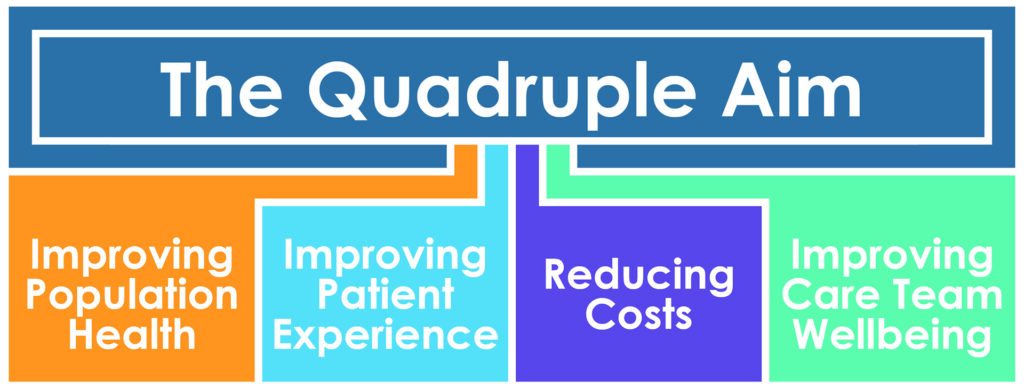 Healthcare Intelligence is a Telligen content series dedicated to exploring the latest trends, news and research across the entire spectrum of health and wellness.
Healthcare Intelligence is a Telligen content series dedicated to exploring the latest trends, news and research across the entire spectrum of health and wellness.
In the span of a few short weeks in early 2020, the landscape of Home and Community-Based Services (HCBS) changed forever. During the almost three-year COVID-19 public health emergency (PHE), state Medicaid programs had to make changes to the way HCBS, and nursing facility services were approved and delivered to maintain the health and safety of both members and providers. These changes included the way that members were assessed to determine the appropriate level and scope of services needed. For almost every state Medicaid program it meant allowing most assessments to be performed virtually.
Prior to the PHE, assessments such as the Supports Intensity Scale-Adult’s Version (SIS-A), Supports Intensity Scale-Children’s Version (SIS-C), InterRAI, Mayo-Portland Adaptability Inventory (MPAI), Pre-Admission Screening and Resident Review (PASSR) level 2 or other state-based assessments were performed in-person, with the assessor going to the member’s home or another location to perform the assessment. These in-person assessments often had high cancellation rates, limited participation to those that could physically be present, required assessors to be on the road instead of assessing members, and potentially increased costs for Medicaid programs.
The Case for Virtual Assessments
 While the PHE has largely become endemic, COVID-19 infection rates are still high in many states and ever-evolving strains require vigilance. Virtual assessments can provide a viable, quality alternative in situations where an individual, member of the individual’s support team, or assessor may have had an exposure. It may also be used if the member is uncomfortable or afraid of exposure or needs to limit contact in situations where the member cannot be vaccinated.
While the PHE has largely become endemic, COVID-19 infection rates are still high in many states and ever-evolving strains require vigilance. Virtual assessments can provide a viable, quality alternative in situations where an individual, member of the individual’s support team, or assessor may have had an exposure. It may also be used if the member is uncomfortable or afraid of exposure or needs to limit contact in situations where the member cannot be vaccinated.
In addition, virtual assessments have other benefits such as avoiding intrusion into the member’s home, assessor safety, reducing the need for assessor travel and allowing for the scheduling of more assessments per day or week (however, it is possible that in some cases virtual assessment won’t save time or increase the number of assessments due to the length and complexity of the assessment.) These factors may lower the overall cost of assessments.
All 49 states that responded to a Kaiser Family Foundation (KFF) survey regarding PHE flexibilities reported they allowed virtual evaluations for eligibility determinations during the PHE. However, according to a subsequent KFF article about the Medicaid PHE unwind, only 20 of those states have made that change permanent, six are transitioning that flexibility to permanent, while 23 states are rescinding virtual evaluations. What is not evident however, is why state Medicaid agencies are shifting back to in-person-only assessments when allowing the flexibility to perform virtual assessments in certain situations may be more cost-effective and beneficial to the member.
What is not evident however, is why state Medicaid agencies are shifting back to in-person-only assessments when allowing the flexibility to perform virtual assessments in certain situations may be more cost-effective and beneficial to the member.
During the PHE, Telligen honed our assessor’s ability to perform these assessments virtually and successfully added the virtual format to our assessment toolkit without compromising quality or service. Our assessors found that a video component, in contrast to telephone-only, provided the best virtual experience and incorporated tools such as having the scoring tool/assessment guide created by the American Association on Intellectual and Developmental Disabilities (AAIDD) for their assessments available for participants. Telligen assessors can now perform assessments in either format – in person or virtual, or a combination of both depending on the circumstances.
One participant in a virtual assessment performed by Telligen pointed to some aspects of the virtual process they found helpful, such as having a blank SIS-A link to follow along. Other participants spoke to the fact that virtual assessments could connect people in different locations, while the video component of the assessment preserved the compassion, professionalism and connection required for these types of comprehensive assessments.
Supporting the Quadruple Aim
Allowing the flexibility to perform assessments virtually also supports the tenets of the Institute for Health Improvement’s Healthcare Quadruple Aim.
 From a quadruple aim perspective, having the flexibility to perform assessments virtually supports a member-centric approach to the assessment, allowing for choice and providing the ability for participation from individuals who might be far away or wouldn’t have been able to participate before.
From a quadruple aim perspective, having the flexibility to perform assessments virtually supports a member-centric approach to the assessment, allowing for choice and providing the ability for participation from individuals who might be far away or wouldn’t have been able to participate before.
Not having to travel to every assessment can reduce costs while simultaneously maintaining quality. While it is evident that more studies regarding the efficacy and reliability of virtual assessments need to be done, they do exist. AAIDD, who publish the SIS-A and C, recognized a monumental shift early in the PHE. They commissioned a study of SIS assessments delivered virtually to determine whether there was any difference in the outcomes versus an in-person assessment. Their findings revealed that while there were subtle differences, these variances were negligible and only in a few rare instances did they impact the assessment. They also concluded that organizations could have confidence in assessments that were completed virtually.
Having the flexibility to perform virtual assessments can also improve provider satisfaction. A residential HCBS provider commented that the virtual format made it convenient to do assessments and scheduling virtually allowed them to break up the assessments over weeks instead of over days in one chunk. Further, two providers who service Medicaid members with brain injuries commented that the process was efficient and flexible, with one noting, “It helps that we know and trust the assessor. This is a relationship that was built via in-person meetings and is key to the assessment process yielding accurate results.”
The option of virtual assessments in some instances may assist in assessor satisfaction as well which can help with employee retention and work/life balance.
An AAIDD study from 2020 on comparing virtual with face-to-face assessments revealed that while there were subtle differences, these variances were negligible and only in a few rare instances did they impact the assessment. (AAIDD, 2020)
In addition, the virtual format may help in avoiding rescheduling due to illness or exposure of the member or the assessor. In the case of the assessor, a virtual assessment could easily be switched to a different assessor if needed in an emergency.
While virtual assessments may not work in every instance and should continue to be monitored for quality outcomes, having a flexible solution that includes both in person and virtual assessments may provide states with a member-centric approach that can be deployed to meet their needs while reducing provider burden and reducing costs. Telligen can help states design a program that makes the best use of the virtual format where appropriate due to the complexity of issues surrounding assessments.
